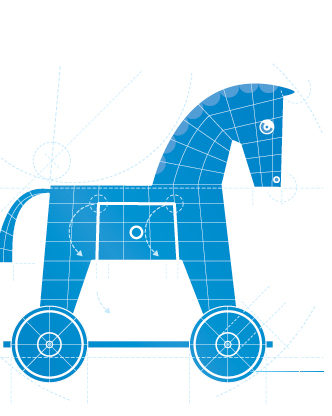
By Jan Makela
People management has drastically changed since earlier decades, where the organization was king and people were workers to serve operational efficiency. The operational model for today is mission, purpose, and sustainability. How can you improve your team or organizational bottom line? Here are seven proven methods that can help:
1. Vision and mission.
In his book The 7 Habits of Highly Successful People, author Stephen Covey wrote, “Start with the end in mind.” What is it that you want? What is in it for others to follow you? There has to be something bigger than you that others can grasp and buy in to.
Why does your organization exist? It is not to make money, that is a result. Workers today want to work for organizations that can show a purpose or cause. Google‘s mission, for example, is “to organize the world's information and make it universally accessible and useful.” Today, Google dominates a huge part of the U.S. online search market.
2. Goals.
Everyone sets them in January. Whether it’s to lose weight or exceed a potholes-repaired forecast, most people begin setting and evaluating their goals at the first of the year. And then what happens? The goals go in a drawer or are hidden in an electronic file never to see the light of day until someone asks.
Therefore, put your goals on display so that the team and you can see the goals on a daily basis. Why? Out of sight means out of mind. Keep your goals in front of the people in charge of accomplishing them and ask them about their progress on a routine basis—preferably on a weekly basis. Ask them how they are doing and what can you do to make the goals easier to accomplish. Watch what your team does.
3. Expectations.
Only 30 percent of employees know what is expected of them at work. Your goal is to get people to work and perform together. People will live up or down to the perception of your expectations of them. If they think you believe in their abilities and expect them to do well, they will. Remember, if people don’t know what you expect, don’t be surprised by what you get.
4. Feedback.
Feedback is craved by high performers and by all employees too. Positive feedback grows and negative feedback stifles. Catch your employees or team members doing the job right and watch when they continue. They will do more of what generates positive feedback.
5. Treat everyone fairly but not equal.
The people you work with are all unique individuals, and although you need to treat each one fairly, that does not necessarily mean equally. They have different values, wants, backgrounds, skillsets, experience, and most likely are at different stages of their careers. One size fits nobody.
Great managers play chess; average managers play checkers. In checkers, all of the pieces move in the same direction. In chess, all of the pieces move differently and the key to success is knowing the differences between the pieces, how each piece moves, and how to create a strategy that maximizes the moves for all of them.
Another key piece of the puzzle is showing your team that you genuinely care about them. They need to know you have their interest at heart. People want to know that someone at work cares about them as a person.
6. Provide tools and resources to do quality work.
Most people don’t wake up in the morning and say to themselves, “I think I will go to work today and do a bad job.” Most people want to do quality work. Part of that is having the tools and resources to do a quality job. Ask your people what you can do to make their job easier.
Reaffirm your commitment and caring to them. If they say, “I need a new widget maker,” get it. Provide them with the resources they need to succeed. If they say they don’t need anything, your response can be: “I guess I can expect quality work.” You want to take away any and all reasons that people can conjure up for failure. You want to leave a path to success.
7. Celebrate success.
What do organizations do when they accomplish a big thing? Well, they move on to the next “big” thing. It is important to stop and celebrate with your teams. Allow people to share the memory of what has been accomplished. Simple things like handwritten notes are important too. Write notes to your employees; yes, the old-fashioned, hand-written notes, saying thank for what they did and how their contribution lead to the overall achievement of the group. They might even post them on the wall of their work space, on their desk, or possibly even on the family refrigerator!
The seven pillars can help separate your organization from the competition in your profession. If you are team leader, it can help you and your team standout within any organization. People who are working in organizations with purpose are much more likely to be promoters of their employers and managers. Not only do they come to work to do quality work, they are less likely to leave and go elsewhere for employment.
Jan Makela is an executive coach, presenter, and author of Cracking the Code to Success and Be the Manager People Won’t Leave, Ellicott City, Maryland (www.StrengthBasedLeadership.net).
New, Reduced Membership Dues
A new, reduced dues rate is available for CAOs/ACAOs, along with additional discounts for those in smaller communities, has been implemented. Learn more and be sure to join or renew today!
